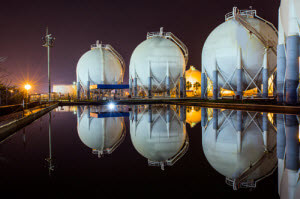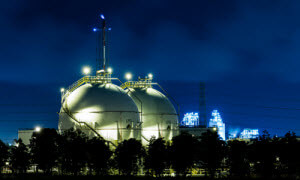Petrochemical Industry Structure: What is Upstream, Midstream & Downstream?
The petrochemical industry has become a big topic of discussion. And since the 2016 US presidential election, there’s been news surrounding the upstream, midstream, and downstream markets of the industry.
But what exactly are the upstream, midstream, and downstream markets of the petrochemical industry?
What is Upstream?
 The upstream market stage in the petrochemical industry refers to the exploration and production of natural gas and crude oil. It’s the first process in the industry, and it focuses on finding economically viable sources of petroleum products.
The upstream market stage in the petrochemical industry refers to the exploration and production of natural gas and crude oil. It’s the first process in the industry, and it focuses on finding economically viable sources of petroleum products.
Exploratory drilling is most often associated with the upstream process of the petrochemical industry. This is when companies drill into the earth to locate underwater and underground sources of natural gas and crude oil. If the exploratory drilling finds viable fields, the natural gas and oil are extracted and pulled to the surface to be recovered.
Exploratory drilling is performed both onshore and offshore and is usually paired with geological and geophysical surveys to help companies better find viable sources.
What is Midstream?
 Once petroleum products are recovered in the upstream sector, they move into the midstream sector of the petrochemical industry. The midstream sector focuses on the transportation and storage of natural gas and crude oils.
Once petroleum products are recovered in the upstream sector, they move into the midstream sector of the petrochemical industry. The midstream sector focuses on the transportation and storage of natural gas and crude oils.
Companies will gather recovered petroleum products and store them until they’re ready to be transported. When they can be moved, natural gas and crude oil are normally transported using pipelines, tanker trucks, and rail lines to the final market stage of the petrochemical industry.
On top of that, midstream processes include elements from both upstream and downstream sectors. For example, some companies in the midstream sectors will also produce and purify other sources of petroleum products like natural gas liquids.
What is Downstream?
The final market stage of the petrochemical industry is downstream. Processes for this sector are dedicated to turning natural gas and oil into marketable petroleum products. Overall, the downstream process has multiple parts, including distributing and selling the petroleum products.
However, the most important part of the downstream market stage is refining, processing, and purifying crude oil and natural gas. When crude oil and natural gas arrives at refineries, they’re turned into the petroleum products we use daily. They include gasoline, kerosene, diesel oil, lubricants, waxes, and liquefied petroleum gas.
The downstream stage of the petrochemical industry includes hydrodesulphurization as well. This process removes poisonous hydrogen sulfide from crude oil and raw natural gas. Once removed, the hydrogen sulfide is converted into elemental sulfur or sulfuric acid.
Each stage of the petrochemical industry structure plays an important role in providing the world with the petrochemical products we use every day. And if you’d like to learn more about the petrochemical industry structure, read our post on why petrochemicals are important.
